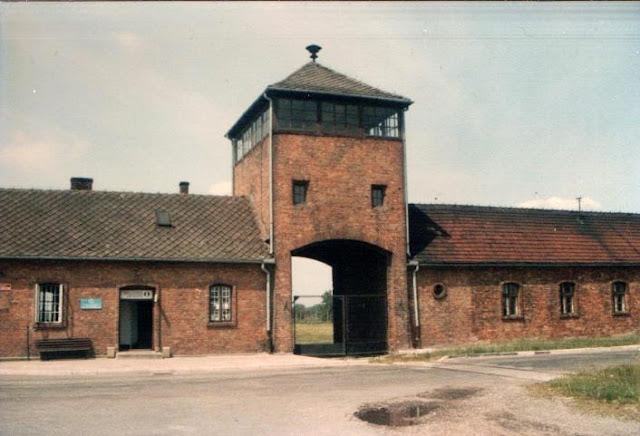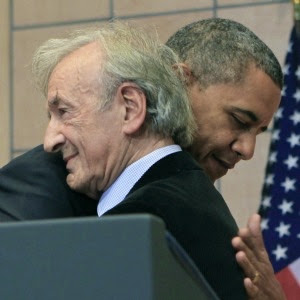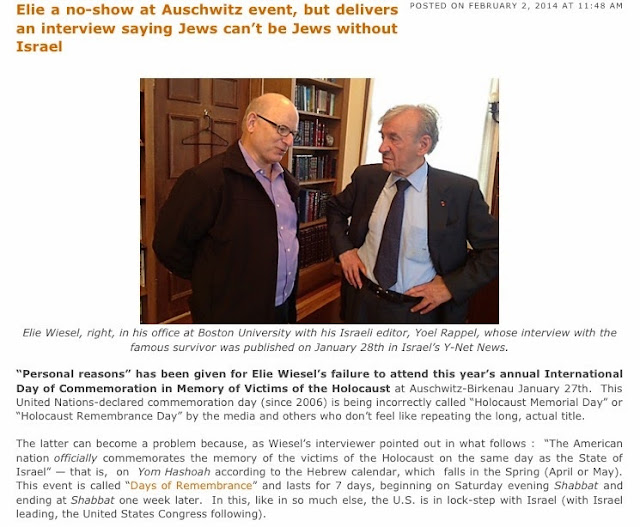There's the secrecy; the C.I.A. link; the crypt-like headquarters, called "the Tomb"; the bizarre rituals; and the roster of alumni, who include three presidents, two Supreme Court chief justices, and scores of Cabinet members, senators, and congressmen. No wonder Skull and Bones, most famous of Yale's undergraduate clubs, is a conspiracy theorist's delight. With two Bonesmen vying for the presidency-John Kerry was tapped in 1965, George W. Bush two years later- ALEXANDRA ROBBINS cuts through the Skull and Bones mystique to reveal its true hold on both candidates.
There are certain sure signs of spring at Yale. Dogwood trees blossom across New Haven. The daffodils on Old Campus bloom. Freshmen turn their speakers to face the courtyard and blast music while they kick Hacky Sacks and throw Frisbees on the green. And a certain group of upperclassmen participate in a quiet but frenzied one-night ritual known simply as Tap Night.
Each of Yale's six major secret societies elects its members on the same night in April of the prospective members' junior year. In April of 1965 and 1967, respectively, John F. Kerry and George W. Bush received the same fateful call to the same mysterious organization: the undergraduate club perhaps mythologized more than any other by the outside world, Skull and Bones.
It's no secret that Skull and Bones, which elects 15 Yale juniors annually to meet in a crypt-like headquarters called "the Tomb," is no mere college club. The fact that the 2004 presidential election is a Bones-versus-Bones ballot raises eyebrows not just because it brings to light that, despite their ideological differences, both candidates come from the same echelon of American society but also because it's a bit astounding that a club with only about 800 living members has seen so many of them reach prominence. Conspiracy theorists are having a field day speculating about the group that has been called everything from "an international mafia" to "the Brotherhood of Death."
They are not completely wrong. Skull and Bones really is one of the most powerful and successful alumni networks in America. Alumni, or "patriarchs," return often to the Tomb, where connections are made and favors granted. Some classes have "Pat Night," an event where patriarchs mingle with "knights" (undergraduate members) and circulate job offers. Among its roster, Bones counts three U.S. presidents, two Supreme Court chief justices, and scores of Cabinet members, senators, and congressmen. Bonesman president William Howard Taft named two fellow Bonesmen to his nine-man Cabinet.
More good news for the fanatics: there is a strong link between Bones and the C.I.A. In Bush and Kerry's day, the agency was known as an "employer of last resort," says a Bonesman from the 1960s, since so many Bonesmen went on to join. "If you couldn't get a job elsewhere, you could go there if you wanted to." Because of the high numbers of Bonesmen in the C.I.A. and in the Time Inc. empire (Time-magazine co-founders Henry Luce and Briton Hadden were members), these organizations were "explicitly willing to take" Bonesmen seeking employment.
Many Bonesmen who had become C.I.A. operatives and government officials returned to the Tomb and discussed highly classified matters, as National-Security Adviser McGeorge Bundy reportedly did. "The things that fascinated me at Pat gatherings were the level of penetration ... and how open they were about talking in the Tomb," says a Bonesman who graduated in the 1980s. "They talked about foreign operations at the time, the stuff that became Iran-contra. The level of trust was startling. It was like once you were trusted enough to get in, people just talked openly."
Other illustrious alumni include Pulitzer Prize-winning biographer David McCullough; former New York Times general manager Amory Howe Bradford; actor James Whitmore; Morgan Stanley founder Harold Stanley; J. Richardson Dilworth, manager of the Rockefeller fortune; former Major League Baseball deputy commissioner Stephen Greenberg; and Walter Camp, the father of American football. During World War II, Bones' Henry Stimson, the secretary of war who often consulted fellow Bonesmen railroad heir W. Averell Harriman and poet Archibald MacLeish, hired four other Bones members for his War Department-Robert Lovett as assistant secretary of war for air, Artemus Gates as assistant secretary of the navy for air, George Harrison as a special consultant, and Harvey Bundy as his special assistant. In this respect, those in the conspiracy crowd who link Skull and Bones to the building of the atomic bomb are not entirely off base: Bonesmen were involved with its construction and deployment.
To be sure, it is an elite group. But while some members come away only with close friendships and peculiar college memories, others take Bones so seriously that they purposefully spread self-aggrandizing rumors about the society to fuel a culture of mystery. Some go as far as to threaten reporters. "The guys who take it really seriously are typically the ones who have lived the myth-the second- and third-generation Bonesmen who campaign to get in, and once they get in it's almost a religious fervor," the 1980s Bonesman says. Many Bonesmen spoke for this article only on condition of anonymity because, as one puts it, "I don't want to get in trouble with those guys." (Neither the White House nor the Kerry campaign returned repeated calls for comment.)
On April 28, 1967, the current president of the United States felt a clap on his shoulder. Contrary to numerous reports, Bush was not tapped by his father (although alumni occasionally participate in "tap"). By the time he got to Yale, Bush had several relatives in Skull and Bones, including his father and grandfather, but it was David Alan Richards who was assigned to tap him, likely because they both lived in the residential college Davenport. Richards met Bush in the Davenport courtyard, wearing his Tiffany gold Skull and Bones pin. "I was told that was my man. I smashed him on the shoulder, barked at him, 'Go to your room,' and followed my instructions," says Richards. "Now it's a matter of some embarrassment because I'm such a Democrat."
(A knight tells a prospective member to go to his room in a nod to Yale's early days, when Tap Day was held in a courtyard in front of an audience of hundreds. Once in private, the Bonesman intones, "At the appointed time tomorrow evening, wearing neither metal nor sulfur, nor glass, leave the base of Harkness Tower and walk south on High Street. Look neither to the right nor to the left. Pass through the sacred pillars of Hercules and approach the Temple. Take the right book in your left hand and knock thrice upon the sacred portals. Remember well, but keep silent, concerning what you have heard here.")
Richards's Bones experience-he was a knight in the class of 1967-intersected both Bush's (1968) and Kerry's (1966). "I have the odd feeling of being a center of the hinge," says Richards, now a real-estate attorney in New York. Of the election process, he says, "It's like picking the American soldiers for a World War II movie-one Jew, one Italian, one American Indian. You want a mix. You don't want everyone to be an Andover preppie who played lacrosse. Did we feel pressure (to elect Bush)? Are you aware of legacies when you're voting? Yeah. But he was well known to two intersecting circles. In my club there were three members of the fraternity D.K.E. and three people in Davenport, and he had the legacy going back several generations. I don't think W. was particularly interested in joining, but it was part of the family life. Do I believe reports that his father encouraged him to do it, as opposed to going into an underground (society) to drink? It's likely. I suspect family pressure was put on him."
Some of those relatives, including Bush's father and grandfather, attended his initiation in the Tomb, says Richards. "All I will say about his initiation," another patriarch who was present says, "is that he caught on pretty quickly and I was pleased with his response." The society is so secretive about Bush's time in Bones that the scrapbooks from his year-each class keeps candid brown-paged scrapbooks to memorialize the experience-have been sealed so knights can't read them. "If those scrapbooks were as obscene as ours were, it's a good thing for the White House and for the society," a Bonesman of that period muttered.
Bones largely presented a departure from Bush's usual college escapades. No alcohol is allowed inside the Tomb, and much of the time inside is spent on debates and delivering "life histories," or oral autobiographies. When George H. W. Bush gave his life history in the fall of 1947, he focused on his military service, married life with Barbara, and his hope to "have an impact in public service," one of his clubmates says. George W. Bush, by contrast, spent most of his presentations in the Tomb speaking about his father-reportedly in "almost God-like terms."
Life histories, as well as initiation rites, the rumored "Connubial Bliss" ritual, and the twice-weekly meetings, all occur in the Tomb. The Tomb has been the Skull and Bones haunt since 1856, when Daniel Coit Gilman, the founding president of Johns Hopkins University, incorporated Bones as the Russell Trust Association, now re-incorporated as RTA. A three-story Greco-Egyptian monolith of brown sandstone, "the T," as Bonesmen refer to it, sits on High Street in the middle of the Yale campus. No non-members-"barbarians," in Bones lingo-are allowed to enter. Inside the Tomb, the halls have been decorated by renowned architect John Walter Cross (a Bonesman) with pieces by distinguished painters such as J. Alden Weir (a barbarian). Dozens of skeletons and skulls grip the walls, surrounding such items as a mummy, gravestones-including one labeled "Tablet from the grave of Elihu Yale (the school's namesake) taken from Wrexham churchyard"-and war memorabilia.
The dining room, which members call "the boodle," is the most impressive chamber in the Tomb, decorated with engraved silver and bronze skulls and 30-foot-high windows that overlook a lush courtyard. The room is blanketed by portraits of the most illustrious Bones alumni, including William Howard Taft; Supreme Court chief justice Morrison Waite; Kerry's classmate Dick Pershing, who was killed in the 1968 Tet offensive; and, as of 1998, former president George H. W. Bush. The skulls and crossbones stamp everything from skull-shaped crockery to exit signs printed with letters composed of tiny skulls. Light shines through the gaping eye sockets of skulls bordering otherwise elegant fixtures. There are grand fireplaces on either side of the room which double as goals for the violent soccer-hockey hybrid Bones sport known as "boodleball."
One of the most avid boodleball players of his year was John Kerry. Kerry, along with Dick Pershing, David Thorne (a publishing executive in Massachusetts), and Fred Smith (the founder of FedEx) played boodleball as often as possible. The game, which involves a half-deflated ball and frequently leaves Bonesmen bleeding, is supposed to be played in the dining room only after it is cleared of couches and other furniture. "The four of us were the core of the boodleball group," says Thorne. "Freddie Smith was a maniac, and Dick broke his toe once. There were a lot of very hard obstacles in the way and we didn't bother moving them."
Kerry came to treasure his boodleball teammates more than the men on his college teams. By all accounts Kerry, who may have felt like an outsider as a Catholic at St. Paul's, his extremely Waspy Episcopalian prep school, thrived at Yale. He was president of the Political Union, a debater, and an athlete who played soccer, ice hockey, and lacrosse. He was friendly with about half a dozen members of his 1966 Bones class before they entered Bones, and was tapped by his St. Paul's friend John Shattuck, who would go on to be an assistant secretary of state under Clinton.
In the Tomb, Kerry bonded closely with the other knights and often steered conversations toward Vietnam and politics. Kerry helped Smith resurrect Yale Aviation, once an influential naval-air-reserve unit founded by Bonesmen during World War I. "Bones was one of the most meaningful parts of his life because of the focus and intensity that came from that experience: the regularly scheduled meetings, the amount of time you formally and informally spend with a group of people that created a bond, and a focus you don't get out of other activities like athletic teams. He remains very close to the guys. Most of us would go out of the way to help each other, no questions asked," says Thorne, Kerry's closest friend and former campaign manager, who became Kerry's brother-in-law when Kerry married Thorne's twin sister, Julia. (Kerry's second wife, Teresa, had become the daughter-in-law of a Bonesman when she married her first husband, Senator John Heinz.)
Other Bonesmen say Kerry was "delighted" by Skull and Bones because it built and cemented strong friendships. Fellow Bonesman Chip Stanberry (1966) was Kerry's partner for three years on Yale's debate team, but he says the friendship didn't grow close until they went through Bones together. "We think of politicians as garrulous and backslapping. John was private and reserved. He was shy to jump into a crowded circle of four guys having a beer. People therefore mistook him as aloof," Stanberry says. In the protective environment of the Tomb, however, Kerry "relaxed, he was more natural. He broke out of whatever that shy, reserved part of his person was. John took it seriously, and it meant a lot to him. Of course, John took everything seriously."
As are all matters relating to Bones, the origin of the society is shrouded in mystery. The most plausible story has Yale student William Russell, later a Civil War general and Connecticut state representative, studying abroad in Germany in 1832. He returned to Yale dismayed to find that Phi Beta Kappa, until then a secret society, had been stripped of its secrecy in the anti-Masonic fervor of the time. Incensed, Russell grabbed some big men on campus, including future secretary of war Alphonso Taft, and formed an American chapter of a German society. The group was founded on the legend that when Greek orator Demosthenes died, in 322 b.c., Eulogia, the goddess of eloquence, arose to the heavens. Originally called the Eulogian Club, the society holds that the goddess returned to take up residence with them in 1832.
Hence the importance of the number 322 to Bones members-Kerry has used 322 as a code, and Thorne uses 322 as his phone extension; W. Averell Harriman used it as the combination of the lock on a briefcase carrying dispatches between London and Moscow-and the obsession with the goddess Eulogia. Members open a shrine to her at Thursday- and Sunday-night meetings, and regularly sing "sacred anthems" about her.
Both 322 and Eulogia are central symbols in the society's initiation. When an initiate approaches the Tomb for the ceremony, the front door creaks open and knights immediately cover his head with a hood. After a brief stay in "the Firefly Room," a pitch-black living room in which his hood is removed to reveal the lit cigarettes the patriarchs wave to resemble fireflies, he is whirled throughout the building and the grounds.
The heart of the ceremony is in Room 322-the Inner Temple, or "I.T." There, a group of knights (led by a distinguished patriarch known for the evening as Uncle Toby, dressed in a distinctive robe) awaits the initiate, wearing masks and various costumes, including the Devil, Don Quixote, Elihu Yale, and a Pope with one foot sheathed in a monogrammed white slipper that rests on a stone skull. Other knights are dressed as skeletons, and patriarchs line the halls, where their solemn duty is to yell so loudly they scare the new member.
One by one, each neophyte is led into the I.T., where he's shoved around to various features of the room, including a picture of Eulogia, and forced to do things such as read a secrecy oath repeatedly, kiss the Pope's foot, and drink "blood" from "the Yorick," a skull container usually holding red Kool-Aid. Finally, the initiate is shoved to his knees in front of Don Quixote as the shrieking crowd falls silent. Quixote taps him on the left shoulder with a sword and says, "By order of our order, I dub thee Knight of Eulogia."
Soon after initiation, each knight is assigned a Bones name, which the society will call him from then on. There are three ways to acquire a nickname: receive one from a patriarch who wishes to pass his down, as Bankers Trust head Lewis Lapham (father of the Harper's editor of the same name) passed "Sancho Panza" to political adviser Tex McCrary; accept a traditionally assigned name, such as "Magog," which is given to the knight with the most sexual experience (Robert Alphonso Taft and William Howard Taft each earned this distinction); or choose your own (McGeorge and William Bundy chose "Odin," Supreme Court justice Potter Stewart-who swore in George H. W. Bush as director of the C.I.A. and vice president-chose "Crappo," W. Averell Harriman and Dean Witter Jr. were "Thor," and Henry Luce opted for "Baal"). John Kerry likely came close to earning the name "Long Devil," the traditional tag for the tallest man in the club, but narrowly missed-Alan Cross, now a doctor in North Carolina, is taller. Kerry chose his own name, but Bonesmen are keeping it quiet. George W. Bush, unable to come up with his own name, was dubbed "Temporary" and never managed to decide on a replacement.
At the end of the school year, the new group of 15 is whisked away to Deer Island in the Saint Lawrence River, 340 miles from New York City; the 50-acre private island was given to the society by a Bonesman at the turn of the 20th century. Both Kerry and Bush returned to the island as seniors. Kerry's group prepared to go to Vietnam. (Kerry spent his time there rewriting his class oration in a rustic cabin by candlelight.) Bush's club spent their time digesting the news that Bobby Kennedy had been shot.
When the knights return from summer break, they almost immediately launch into the activity that a knight from Prescott Bush's class once called "a wonderful sensation." Perhaps the most prevalent rumor about Bones is that initiates must lie naked in a coffin and masturbate while recounting their sexual histories. Naked coffin exploits aren't officially on the Bones program, but part of the rumor is not too far from the truth: at successive Sunday meetings, each knight has an evening devoted to him for the activity known as "Connubial Bliss." In a cozy room lit only by a crackling fire, in front of 14 clubmates lounging on plush couches, he stands before a painting of a woman named Connubial Bliss while the knights sing a sacred anthem about romance, ending with "so let's steal a few hours from the night, my love." Then he is expected to recount his entire sexual history.
Apparently this ritual has remained unchanged since the acceptance of women into the club in 1991. A group of Bonesmen led by William F. Buckley Jr. (Bones name: Cheevy) obtained a court order blocking initiation of the society's first female members, claiming that admitting women would lead to "date rape" in the "medium future." Approximately 83 women have since been admitted, despite feverish lobbying by W.'s uncle Jonathan Bush, whom a fellow member called a "fanatical Bonesman." Neither Bush's nor Kerry's daughters are members, however. Kerry's daughter Vanessa wasn't tapped in 1998, and last year Bush's daughter Barbara decided to join Spade and Chalice, an underground (less formal, tomb-less) society.
For all the mystery and conspiracy theories surrounding Skull and Bones, the club's deepest secret may be its most obvious: the bonds between Bonesmen often supersede others. "For some people, Skull and Bones becomes the most important thing that ever happened to them, and they tend to stay involved," a patriarch told me. Indeed, the year spent as an undergraduate in the club is really only the beginning of a lifetime membership that can, depending on how it is used, reap enormous benefits.
As his father and grandfather had done before him, George W. Bush called a Bonesman when he was looking for his first job out of college. Although Robert Gow wasn't hiring at the time, he still took on Bush as a management trainee at his Houston-based agricultural company Stratford of Texas. In 1977, when Bush formed his first company, he turned to his uncle Jonathan Bush, who lined up $565,000 from 28 investors. One investor brought in approximately $100,000: California venture capitalist William H. Draper III, a Bonesman. Even Bush's Rangers baseball deal involved a Bonesman-Edward Lampert (Bones 1984) was an initial investor.
Bonesmen used to grant favors if a fellow member began a conversation with the code phrase "Do you know General Russell?" By the time he was running for president, Bush didn't have to ask. In October of 2000, Stephen Adams (Bones 1959), who owns Adams Outdoor Advertising, spent $1 million on billboard ads in key states for Bush. When asked a few years ago why he had made such a large contribution to someone he hadn't met, Adams replied that the shared Bones experience was a factor. Even a 1970s Bonesman who tried to quit the society admitted he would readily help a fellow Bonesman "just because of Bones. Because we did go through something really weird together."
Bush apparently feels the same way. One of the first social gatherings he held in the White House was a reunion of his Skull and Bones 1968 clubmates, and within the past two years he held another reunion, this time at Camp David. One of Bush's early appointments as president was Robert McCallum Jr. (Bones 1968), now associate attorney general. (In 2002, McCallum, whose Justice Department civil division includes attorney and 1984 Bonesman David Wiseman, filed pleadings in U.S. District Court asserting an executive privilege that would make information on presidential pardons more secret than in the past.) Among Bush's other Bones appointees are Bill Donaldson (1953), chairman of the Securities and Exchange Commission (and onetime director of the Deer Island Corporation); Edward McNally (1979), general counsel of the Office of Homeland Security and a senior associate counsel to the president; Rex Cowdry (1968), associate director of the National Economic Council; Roy Austin (1968), ambassador to Trinidad and Tobago; Evan G. Galbraith (1950), the secretary of defense's representative in Europe and the defense adviser to the U.S. mission to nato; James Boasberg (1985), associate judge of the superior court of the District of Columbia; former Knoxville mayor Victor Ashe (1967), the first mayor appointed to the board of directors of the housing-finance company Fannie Mae; Jack McGregor (1956), a nominee for the Saint Lawrence Seaway Development Corporation advisory board, the same waterway that is home to Deer Island; and Bush's cousin George Herbert Walker III (1953), ambassador to Hungary. Frederick Smith (1966) was reportedly Bush's top choice for secretary of defense until he withdrew from the running because of health reasons.
Bonesmen say the president values the society because it became an extension of his family: the Bush-Walker web in Bones includes at least 10 members, including those who, like Reuben Holden (Bones name: McQuilp), married in. Donald Etra, a member of Bush's 1968 Bones club and a close friend who regularly visits the president, says Bones is important to Bush because "loyalty and tradition is important to the family." But Bush views Bones, he adds, "as a private matter which he does not discuss. The president believes there's still a realm where privacy counts."
Bones loyalty runs deep in John Kerry too. In 1993, Kerry, who, like Bush, has participated in several reunions with his clubmates, organized a meeting and a visit to Arlington National Cemetery on the 25th anniversary of Dick Pershing's death. When Pershing died, Kerry wrote to his own parents that Pershing "was so much a part of my life at the irreplaceable, incomparable moments of love, concern, anger and compassion exchanged in Bones that can never be replaced." After the trip to the gravesite, 10 members convened at a Washington hotel to talk about Pershing, Bones, and one another. "It was very, very moving and poignant," says Chip Stanberry. "It was neat that John went to the trouble to make it happen, and 30 years later we were able to pick up with each other, immediately identifying, feeling a connection." Kerry has also been back to the Bones Tomb a few times and once delivered a speech there. "When he's got a little time, he stops in. Most of us do," Thorne says.
On at least one occasion, Kerry took on a more involved Bones role. In 1986, Jacob Weisberg, now the editor of Slate, was taking time off from Yale to intern at The New Republic, in Washington, D.C., when he received a call from Kerry's secretary. "Senator Kerry wants to see you in his office," the secretary said. "He won't tell me what it is about."
Weisberg showed up at the senator's office at eight a.m. Initially, Kerry made small talk while Weisberg wondered why he was there. Then Kerry tapped him for Bones. Weisberg, who hadn't known Kerry was a member, was stunned.
"Senator Kerry," Weisberg said, "you're a liberal-why do you support this organization that doesn't admit women?"
Kerry listed his efforts to assist women throughout his career. "I've marched with battered women. I've supported women's rights. No one can question my dedication to women." Weisberg said he wasn't interested. Kerry replied, "Promise me you'll think about it before saying no."
When Weisberg called Kerry back, his call went straight through to the senator. He rejected the offer, and Kerry, Weisberg recalls, said he was disappointed.
Kerry's fellow Bonesmen say the senator considers Skull and Bones a valuable part of his college life and a source of lasting friendships-but no more than that. "I don't think it plays a significant role in his thinking or in his circle of advisers," says Alan Cross. Indeed, a glance through notable figures in Kerry's life reveals only the Bonesmen whom he knew before they were tapped. And Kerry, as an anti-war Vietnam veteran, publicly railed against fellow Bonesman McGeorge Bundy in testimony before the Senate Foreign Relations Committee in 1971.
"(Kerry's) family carried the name Forbes, but John was never comfortable as a part of the Establishment," says Thorne, who adds that the 1966 group wasn't the "elite Establishment type." "He achieved what he achieved on his own. His is a life marked by intellectual and other kinds of achievement, not by who you know. That's just how he was."
Thorne has friends in both the Kerry and Bush families, and has discussed the Bones-versus-Bones election with Kerry and with first cousin Brinkley Thorne, one of Bush's fellow 1968 Bonesmen, who has remained close to the president. When I asked David Thorne why Kerry dismisses inquiries about the society, he said the Bones face-off is simply a source of amusement. "It's kind of an amazing coincidence, and so much elitism can be drawn from it. The accusation of all the mysteries attributed to Bones-is this the big one?" Thorne laughs. "I think John feels it's not relevant to the election, like marriage or divorce. It's a private matter. Bones is no less meaningful to George than it was to John, and I'm sure they both know of their own experience and they acknowledge that."
Certainly neither man is speaking about Bones in public. "It's a secret," Kerry deadpanned when Tim Russert asked him about Bones on Meet the Press. "It's so secret we can't talk about it," Bush responded when Russert asked him a similar question in February 2004.
Despite political differences, most members view the upcoming election with a mixture of pride in the society and embarrassment at the increased scrutiny. As they see it, Bones will have a White House connection either way. "It's a win-win situation," says a 1960s Bonesman. "If there is a goddess, it looks like she is smiling on them both."

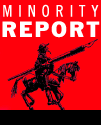 IS THERE a more contemptible poseur and windbag than Elie Wiesel? I suppose there may be. But not, surely, a poseur and windbag who receives (and takes as his due) such grotesque deference on moral questions. Look, if you will, at his essay on Jerusalem in the New York Times of January 24.
IS THERE a more contemptible poseur and windbag than Elie Wiesel? I suppose there may be. But not, surely, a poseur and windbag who receives (and takes as his due) such grotesque deference on moral questions. Look, if you will, at his essay on Jerusalem in the New York Times of January 24. 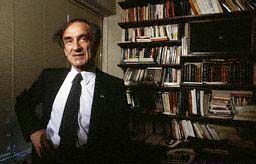 Such magnificent condescension, to grant his critics the right. And it is not certain from when Wiesel dates his high-minded abstention from Israel's internal affairs; he was a member of Menachem Begin's Irgun in the 1940s, when that force employed extreme violence against Arab civilians and was more than ready to use it against Jews. At all events, his dubious claim above is only a pompous preface to discarding nonintervention in the present because Jerusalem is at stake, and "the fact that I do not live in Jerusalem is secondary; Jerusalem lives within me." (Again the modesty.) There are, sad to say, serpents in Wiesel's internal Eden, and they too must be patronized:
Such magnificent condescension, to grant his critics the right. And it is not certain from when Wiesel dates his high-minded abstention from Israel's internal affairs; he was a member of Menachem Begin's Irgun in the 1940s, when that force employed extreme violence against Arab civilians and was more than ready to use it against Jews. At all events, his dubious claim above is only a pompous preface to discarding nonintervention in the present because Jerusalem is at stake, and "the fact that I do not live in Jerusalem is secondary; Jerusalem lives within me." (Again the modesty.) There are, sad to say, serpents in Wiesel's internal Eden, and they too must be patronized: This claim is a cheap lie and is known by Wiesel to be a lie. It is furthermore an utterly discredited lie, and one that Israeli officialdom no longer cares to repeat. Israeli and Jewish historians have exposed it time and again: Every Arab broadcasting station in the region, in 1947 as well as 1948, was monitored and recorded and transcribed by the BBC, and every Arab newspaper has been scoured, and not one instance of such "incitement," in direct speech or reported speech, has ever come to light. The late historian and diplomat Erskine Childers issued an open challenge on the point as far back as the 1950s that was never taken up and never will be. And of course the lie is a Big Lie, because Expulsion-Deniallies at the root of the entire problem and helps poison the situation to this day. (When Israel's negotiators gingerly discuss the right of return, at least they don't claim to be arguing about ghosts, or Dead Souls.)
This claim is a cheap lie and is known by Wiesel to be a lie. It is furthermore an utterly discredited lie, and one that Israeli officialdom no longer cares to repeat. Israeli and Jewish historians have exposed it time and again: Every Arab broadcasting station in the region, in 1947 as well as 1948, was monitored and recorded and transcribed by the BBC, and every Arab newspaper has been scoured, and not one instance of such "incitement," in direct speech or reported speech, has ever come to light. The late historian and diplomat Erskine Childers issued an open challenge on the point as far back as the 1950s that was never taken up and never will be. And of course the lie is a Big Lie, because Expulsion-Deniallies at the root of the entire problem and helps poison the situation to this day. (When Israel's negotiators gingerly discuss the right of return, at least they don't claim to be arguing about ghosts, or Dead Souls.) In 1982, after Gen. Ariel Sharon had treated the inhabitants of the Sabra and Shatila camps as target practice for his paid proxies, Wiesel favored us with another of his exercises in neutrality. Asked by the New York Times to comment on the pogrom, he was one of the few American Jews approached on the matter to express zero remorse. "I don't think we should even comment," he said, proceeding to comment bleatingly that he felt "sadness -- with Israel, and not against Israel." For the victims, not even a perfunctory word.
In 1982, after Gen. Ariel Sharon had treated the inhabitants of the Sabra and Shatila camps as target practice for his paid proxies, Wiesel favored us with another of his exercises in neutrality. Asked by the New York Times to comment on the pogrom, he was one of the few American Jews approached on the matter to express zero remorse. "I don't think we should even comment," he said, proceeding to comment bleatingly that he felt "sadness -- with Israel, and not against Israel." For the victims, not even a perfunctory word.![]()
] Alan Heath (of Poland) responds (9.2.01): "The person in the top right hand corner whose face only is visible is Mel Mermelstein who recalls how it was taken in his book By Bread Alone." Our comment: Mermelstein and Wiesel both claim to have shared bunks at Buchenwald? Some people just want to be the corpse at every funeral and the bride at every wedding.




